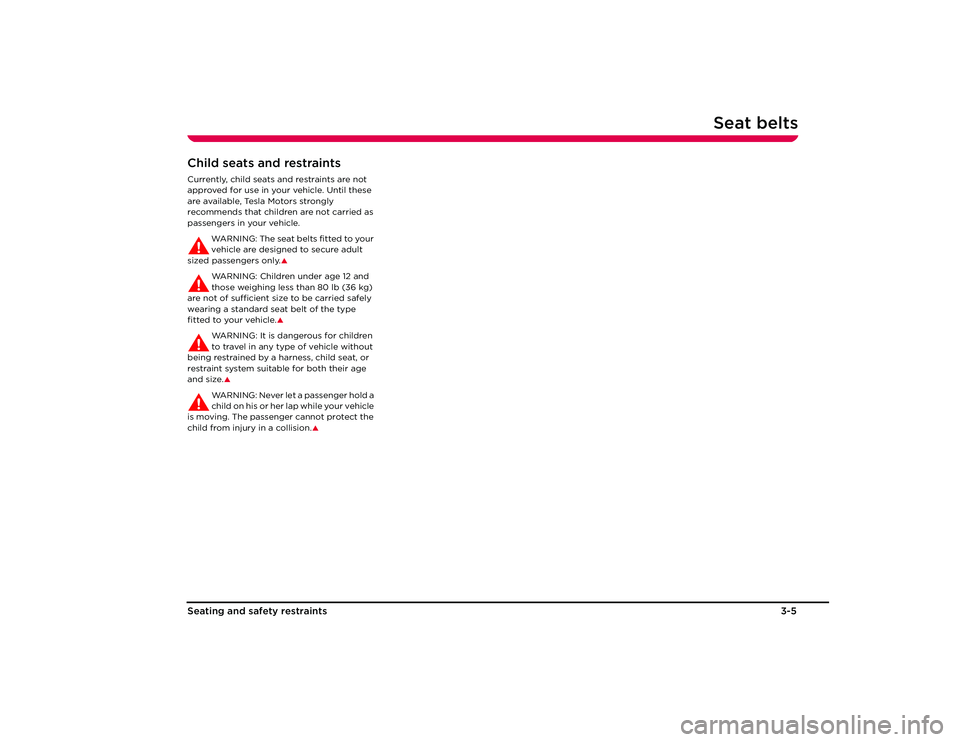Page 17 of 115

Seat belts3-4
Seating and safety restraints
6. Pull the diagonal part of the belt towards the retractor to remove excess slack.Releasing the beltRelease the seat belts by pressing the red
button on the buckle. The belt retracts
automatically.Seat belt reminder
The seat belt warning indicator in the
instrument panel illuminates
whenever the driver’s seat belt is unbuckled.
Also, an audible sound will be heard for six
seconds if the starter switch is turned to the
ON position and the drivers seat belt is
unbuckled.
Wearing seat belts during
pregnancy
WARNING: Pregnant woman should
always wear seat belts to protect
themselves and th eir unborn child.
�S
WARNING: Never place anything
between you and the seat belt to
cushion the impact in the event of an
accident.
�S
The lap portion of the belt should be worn as
low as possible across the hips, not the waist.
Position the diagonal part of the belt
between the breasts and to the side of the
abdomen.
If you have any concerns about wearing seat
belts, contact your doctor.
Seat belt tensioners
WARNING: If the seat belt
pre-tensioners have been activated
once, they must be replaced. After any
accident, always have the airbags, seat belt
pre-tensioners and any associated
components checked and, if necessary,
replaced by Tesla Motors.
�S
The seat belts are equipped with
pre-tensioners that activate in conjunction
with the airbags and provide additional
protection in the event of a severe frontal
impact on your vehicle.
The pre-tensioners automatically retract the
seat belt buckle, reducing any slack in both
the lap and diagonal portions of the belts,
resulting in reduced forward movement of
the occupant. Following an accident in which the
pre-tensioners have been activated, the seat
belts continue to function as restraints and
must be worn if you drive your vehicle.
Caring for seat belts
WARNING: Regularly check the
condition of both belts. Replace seat
belts if you notice any damage to the belt
webbing, fittings, retractor mechanisms or
buckles.�S
Three tests for checking seat belts:
1. With the seat belt fastened, give the webbing nearest the buckle a quick pull.
The buckle should remain securely
locked.
2. With the belt unfastened, unreel the webbing to its limit. Check that unreeling
is free from snags and visually check the
webbing for wear. Allow the webbing to
retract, checking that retraction is
smooth and complete.
3. With the webbing half unreeled, hold the tongue plate and pull forward quickly.
The mechanism must lock automatically
and prevent further unreeling.
If a seat belt fails any of these tests, contact
Tesla Motors immediately.
For seat belt cleaning information, see Seat
belts, page 9-8 .
TR0140
Roadster OHB.book Page 4 Th ursday, October 2, 2008 8:59 AM
Page 18 of 115
Seat belts
3-5
Seating and s afety restraints
Child seats and restraintsCurrently, child seats and restraints are not
approved for use in your vehicle. Until these
are available, Tesla Motors strongly
recommends that children are not carried as
passengers in your vehicle.
WARNING: The seat belts fitted to your
vehicle are designed to secure adult
sized passengers only.
�S
WA R N I N G : C h i l d r e n under age 12 and
those weighing less than 80 lb (36 kg)
are not of sufficient size to be carried safely
wearing a standard seat belt of the type
fitted to your vehicle.
�S
WARNING: It is dangerous for children
to travel in any type of vehicle without
being restrained by a harness, child seat, or
restraint system suitable for both their age
and size.
�S
WARNING: Never let a passenger hold a
child on his or her lap while your vehicle
is moving. The passenger cannot protect the
child from injury in a collision.
�S
Roadster OHB.book Page 5 Th ursday, October 2, 2008 8:59 AM
Page 19 of 115

Airbag system3-6Seating and safety restra
ints
Airbag systemGeneral informationThe airbag for the driver is located in the
padded hub of the steering wheel. The airbag
for the passenger is located on the
dashboard. These are indicated by the word
AIRBAG on the trim.
Provided the occupants are correctly seated
and the seat belts are properly worn, the
airbags provide additional protection to the
chest and face of the occupants in the event
of a severe frontal impact.
Note: Airbags inflate and deflate very quickly
and will not protect occupants against the
effects of secondary impacts that may occur.
How the system works
WARNING: The airbags are a
supplemental restraint system
providing additional protection in certain
types of collisions only - they do not replace
the need to wear a seat belt.
�S
Operation of the airbag system depends on
the rate at which your vehicle's passenger
compartment changes speed as a result of a
collision.
In the event of a collision, the airbag control
unit monitors the rate of deceleration
induced by the collision to determine
whether the airbags should be deployed.
When deployed, airbags inflate instantly, with
considerable force accompanied by a loud
noise. The inflated bag, together with the
seat belt restraint system, limit the movement
of the occupants, thereby reducing the risk of
injury to the head and upper torso.
TR0082
1
2
The airbag system is not designed to operate
as a result of:
• Rear collisions
• Minor front impacts
• Minor side impacts
• Heavy braking
• Driving over bumps or potholes
It follows, therefore, that significant superficial
damage can occur without the air bags
deploying or, conversely, that a relatively small
amount of structural damage can cause the
airbags to be deployed.Deployment effects
WARNING: Following inflation, some
airbag system components are hot. Do
not touch until they have cooled.
�S
WARNING: The airbag module inflates
with considerable speed and force. An
inflating airbag can cause facial abrasions and
other injuries. To limit these injuries, ensure
that occupants are correctly seated, with the
seat as far back as is practical, and are
wearing seat belts.
�S
WARNING: The National Highway Traffic
Safety Administration (NHTSA)
recommends a minimum distance of 10 inches
(25 cm) between an occupant’s chest and the
driver’s airbag module.
�S
When the airbags are deployed, a fine powder
is released. This is not a malfunction. However,
the powder may irritate the skin and should be
thoroughly flushed from the eyes and from
any cuts or abrasions on the skin.
Roadster OHB.book Page 6 Th ursday, October 2, 2008 8:59 AM
Page 20 of 115

Airbag system
3-7
Seating and s afety restraints
After inflation, the airbags will deflate to
provide a gradual cushioning effect for the
occupants and to ensure the driver's forward
vision is not obscured.
If the airbags have been deployed, always
have the airbags, seat belt pre-tensioners and
any associated components checked and, if
necessary, replaced by Tesla Motors.
After any accident, always have the airbags,
seat belt pre-tensioners and any associated
components checked and, if necessary,
replaced by Tesla Motors.Obstruction of airbags
WARNING: Do not allow passengers to
obstruct the operation of the airbags
by placing feet, knees or any other part of the
body, or any other objects in contact with, or
in close proximity to, an airbag module.
�S
WARNING: Do not attach or position
items on an airbag cover which could
interfere with the inflation of the airbag or be
propelled inside your vehicle and injure
occupants.
�S
Airbag warning indicator
A warning indicator in the instrument
panel alerts you of any malfunction of
the airbag system.
The components of the system being
monitored include: the airbag modules, the
seat belt pre-tensioners, the airbag control
unit and the airbag wiring harness.
When the starter switch is turned to the ON
position, the airbag control unit monitors the
readiness of the system’s electrical circuits.
Contact Tesla Motors if:
• The warning indicator fails to illuminate
when the starter switch is turned to the
ON position.
• The warning indicator fails to extinguish
within approximately six seconds after
the starter switch is turned to the ON
position.
• The warning indicator illuminates while
your vehicle is being driven.
Airbag warning labels
WARNING: Extreme hazard! Do not use
a rearward facing child restraint on a
seat protected by an airbag in front of it.
Doing so increases the risk of death or
serious injury when the airbag deploys.
�S
Airbag warning information is printed on the
driver’s and passenger’s sun visor.Using child seats
WARNING: Currently, child seats and
restraints are not approved for use in
your vehicle. Until these are available, Tesla
Motors strongly recommends that children
are not carried as passengers in your vehicle,
and that you do not fit any type of child seat
into your vehicle. Death or serious injury may
occur if the child is too close to the
dashboard when the airbag inflates.
�S
Passenger airbag deactivation
WARNING: Your vehicle is fitted with an
airbag system that has no provision for
switching off or deactivating the passenger
airbag.�S
!WARNING
DEATH or SERIOUS INJURY can occurChildren 12 and under can be killed by the airbagNEVER put a rear facing child seat in the frontSit as far back as possible from the air bagALWAYS use SEAT BELTS and CHILD RESTRAINTS
TR0138
Roadster OHB.book Page 7 Th ursday, October 2, 2008 8:59 AM
Page 21 of 115
Airbag system3-8
Seating and safety restraints
Airbag service information
WARNING: The disposal of used airbag
units is subject to stringent regulations,
and should only be handled by Tesla
Motors.�S
For your safety, a Tesla Motors technician,
who is familiar with your vehicle, must
perform the following tasks:
• Removal, replacement, repair, or
modification, of any wiring or component
in the vicinity of airbag system
components, including the steering
wheel, steering column, dashboard and
instrument panel.
• Modification to the front or side of your
vehicle, including the bumper and
chassis.
In addition, always seek the assistance of
Te s l a M o t o r s i f : • An airbag inflates
• A pre-tensioner activates
• The front or side of your vehicle is
damaged, even if the airbag has not
inflated
• Any part of an airbag module cover
shows signs of cracking or damageRoadster OHB.book Page 8 Th ursday, October 2, 2008 8:59 AM
Page 22 of 115
4-1
Doors, locks, and security
Keys
About your keys 4-2
Using the key fob 4-2
Doors Exterior door release 4-4
Interior door release 4-4
Central door locking 4-4
Emergency unlocking 4-5
Trunk Opening the trunk 4-6
Closing the trunk 4-6
Trunk interior release handle 4-6
Vehicle security Alarm System 4-7
Vehicle PIN code 4-8
PIN lock 4-10
Valet mode 4-11
Roadster OHB.book Page 1 Thursday, October 2, 2008 8:59 AM
Page 23 of 115

Keys4-2
Doors, locks, and security
Doors, Locks, and Security
KeysAbout your keys
Caution: The key fob contains delicate
electronic circuits and must be
protected from impact, water damage
and high temperatures. Avoid contact with
solvents, waxes and abrasive cleaners.
You have been supplied with three keys. Two
of the keys are key fobs with three buttons:
1. Lock button
2. Unlock button
3. Programmable button. See
Programmable button, page 4-3 .
Keep one of the keys in a secure place for use
in emergencies. If you lose a key, contact
Tesla Motors for a replacement.
Using the key fobThe buttons on the key fob transmit a coded
radio signal to a receiver in your vehicle. It is
not necessary to point the key fob at your
vehicle, but you must be within operating
range and you must hold the button down for
two seconds. The operating range will vary
according to the key fob’s battery condition
and other physical factors.
If the vehicle can not be locked or unlocked
using the associated button on the key fob, it
may be necessary to change the battery in
the key fob. See Replacing the key fob’s
battery, page 4-3 .
Note: Interference from other radio
equipment operating on a similar frequency
may affect operation of the key fob. If this
happens, operate the key fob as close to your
vehicle as possible. If you are unable to unlock your vehicle with the key fob, use the
emergency key lock. See
Emergency
unlocking, page 4-5 .
Locking
WARNING: Never leave anyone in your
vehicle when it is locked using the key
fob. The interior door release handles will
operate, but because the car was locked
using the key fob, the alarm will sound. To
re-open the doors using the exterior door
release handles, you must first disarm the
alarm using the key fob.
�S
Press the Lock button on the key fob to
lock the doors and arm the alarm.
The turn signals will flash once and the red
alarm indicator on the console (illustrated on
page 4-7) will illuminate and continue to flash
on and off while the vehicle is locked. If you
push the Lock button after the vehicle has
already been locked, you’ll hear a
confirmation beep.
If a door, the hood or the trunk are not fully
closed when the lock button is pressed, the
turn signals will not flash and your vehicle is
not armed. Check that the doors, hood and
trunk are fully closed, then re-lock your
vehicle.
If any attempt is made to open the doors or
the hood after the alarm has been set, the
horn will sound and the turn signals will flash
for one minute. See Alarm System, page 4-7 .
TR0044
1
2
3
TR0090
Roadster OHB.book Page 2 Th ursday, October 2, 2008 8:59 AM
Page 24 of 115

Keys
4-3
Doors, locks, and security
Unlocking
Press the Unlock button on the key fob
to unlock the doors and disarm the
alarm.
The turn signals flash twice and the red alarm
indicator on the console extinguishes.
Note: If neither door or trunk are opened
within one minute, the doors will
automatically re-lock and the alarm will arm.
Programmable button
This button can be programmed to
perform one of the following functions:
• Alarm
The horn sounds and the exterior lights
flash for one minute. Press again to cancel
the alarm.
• Trunk release
Opens the trunk.
• Open or close a HomeLink
® device
Operates devices such as a garage door
or gate.
To program this button, use the Touch
Screen. Refer to the Touch Screen Users
Manual, provided in your owners package.
To activate the programmed function, press
and hold the button for two seconds.
Replacing the key fob’s batteryThe key fob’s battery should last for
approximately one year depending on use.
When the battery needs replacing, you’ll notice a deterioration in performance. For
example, you’ll gradually need to be closer to
the vehicle to operate the key fob.
To replace the battery:
1. Remove the securing screw on the rear of the key fob and carefully separate the two
halves. Avoid damaging the seal between
the two halves.
2. Remove the batteries, taking care to avoid touching the circuit board or the
contact surfaces of the battery holder.
3. Fit two new batteries (type CR1616) with the ‘+’ sides facing upwards.
If possible, avoid touching the flat
surfaces of the battery because finger
marks will reduce battery life. Wipe the
battery clean before fitting.
4. Assemble the two halves of the key fob.
ComplianceThe key fob complies with Title 47 CFR Part
15 Subpart C rules for intentional radiators.
Operation is subject to the following
conditions:
• This device may not cause harmful
interference.
• This device must accept any interference
received, including interference that may
cause undesired operation.
Any changes or modifications to the key fob
not expressly approved by the manufacturer
or Tesla Motors could void the user’s
authority to operate the equipment.
Transmitter FCC ID: L2M001004
TR0156
Roadster OHB.book Page 3 Th ursday, October 2, 2008 8:59 AM
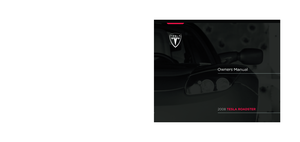 1
1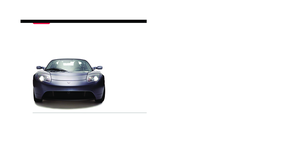 2
2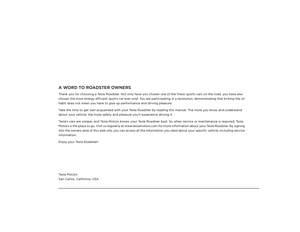 3
3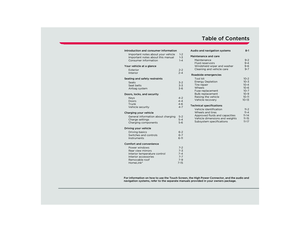 4
4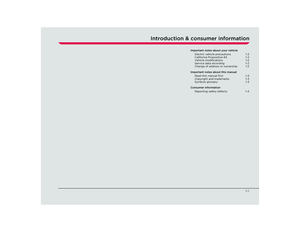 5
5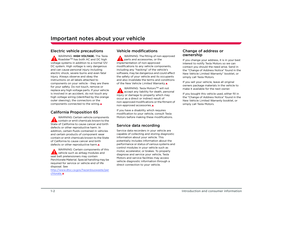 6
6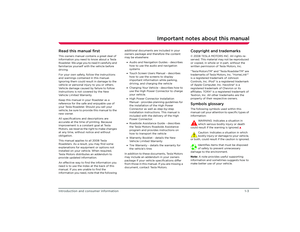 7
7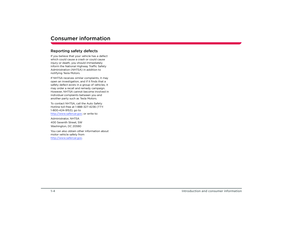 8
8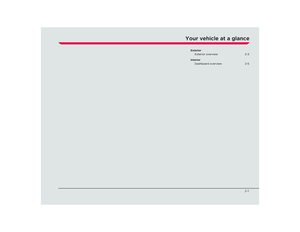 9
9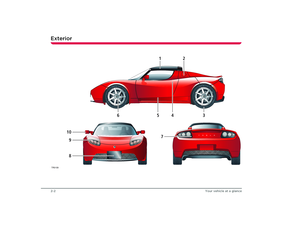 10
10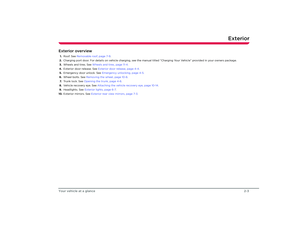 11
11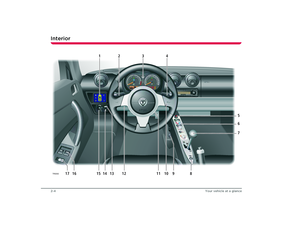 12
12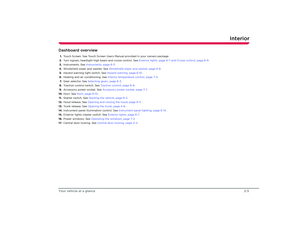 13
13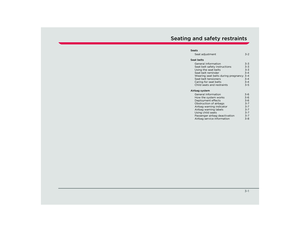 14
14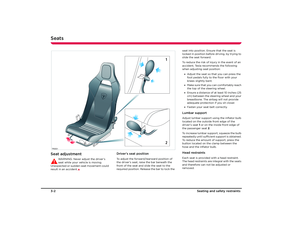 15
15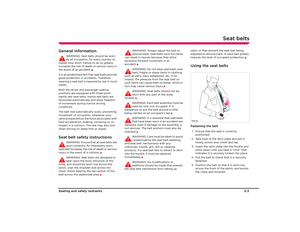 16
16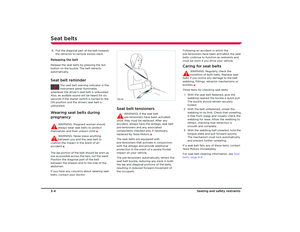 17
17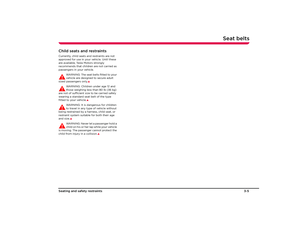 18
18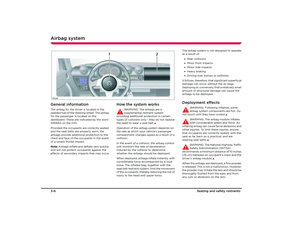 19
19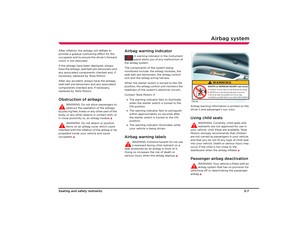 20
20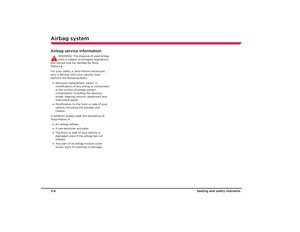 21
21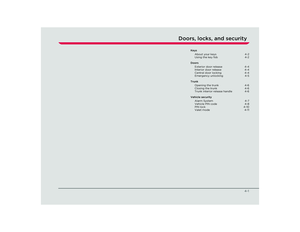 22
22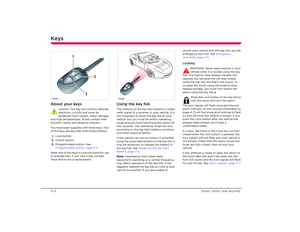 23
23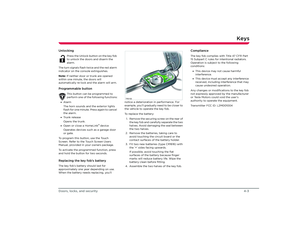 24
24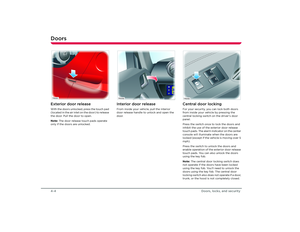 25
25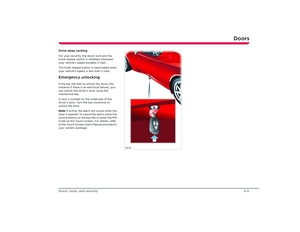 26
26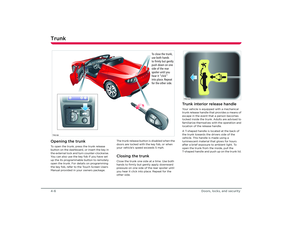 27
27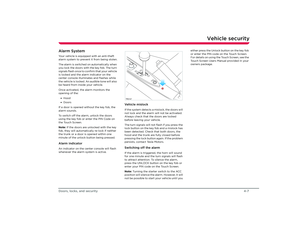 28
28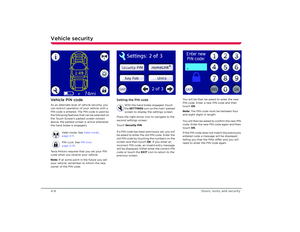 29
29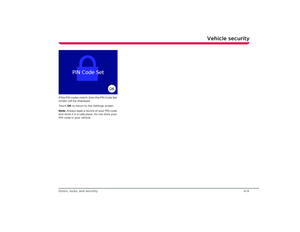 30
30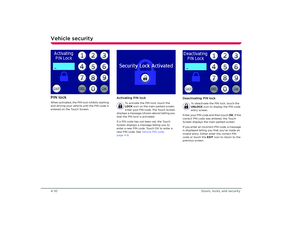 31
31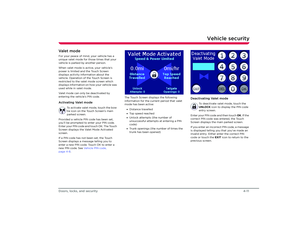 32
32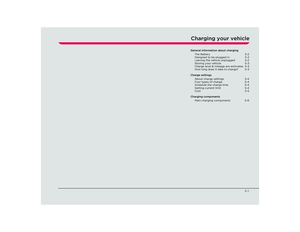 33
33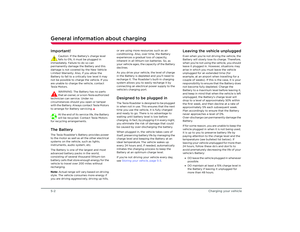 34
34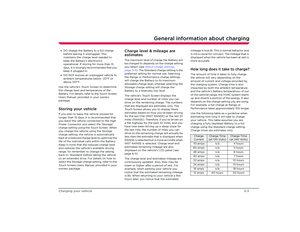 35
35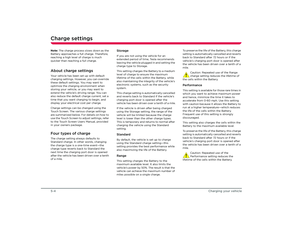 36
36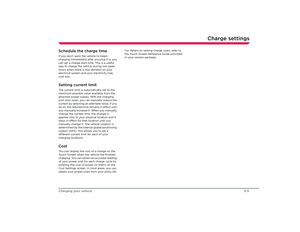 37
37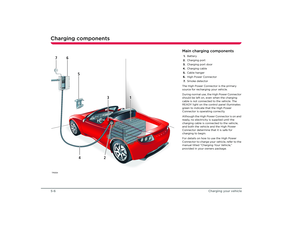 38
38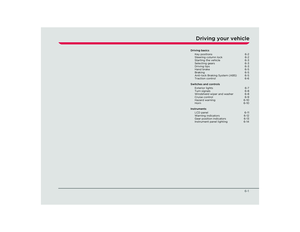 39
39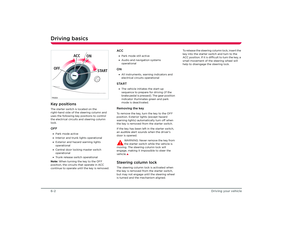 40
40 41
41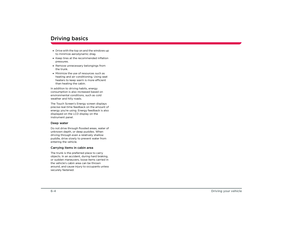 42
42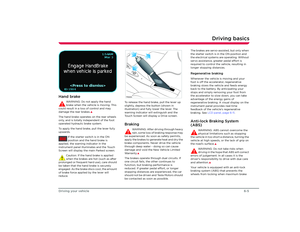 43
43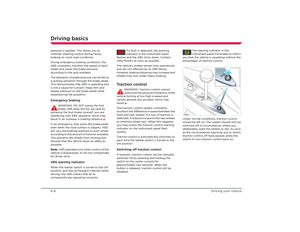 44
44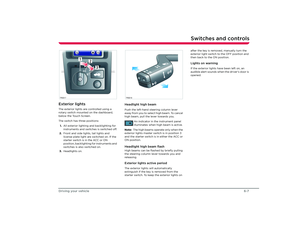 45
45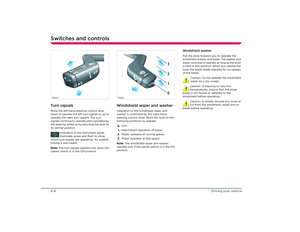 46
46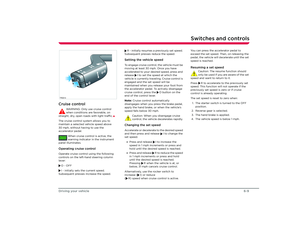 47
47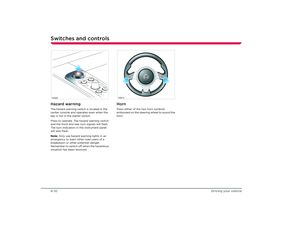 48
48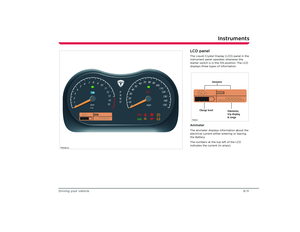 49
49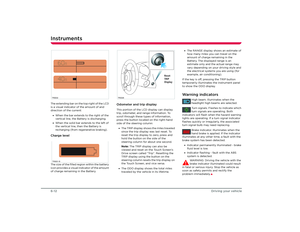 50
50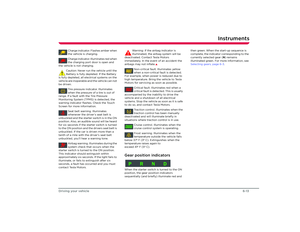 51
51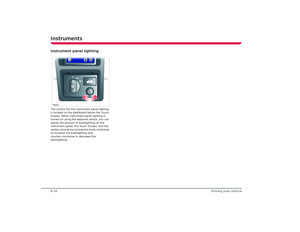 52
52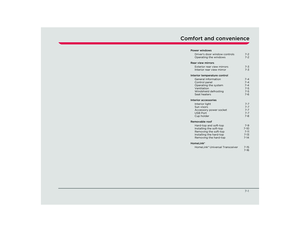 53
53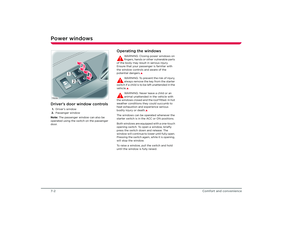 54
54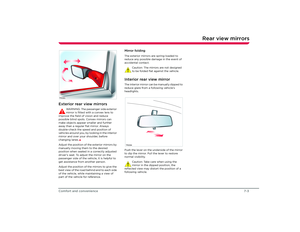 55
55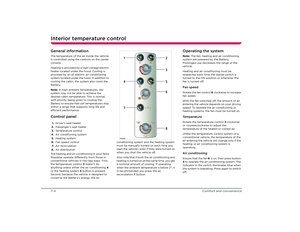 56
56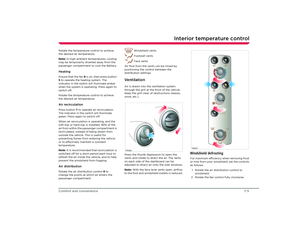 57
57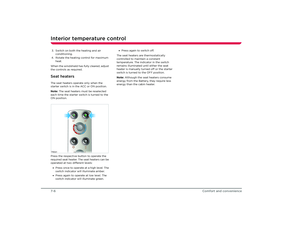 58
58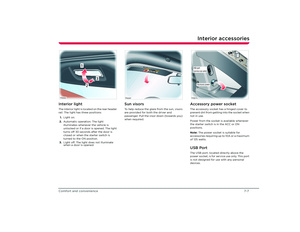 59
59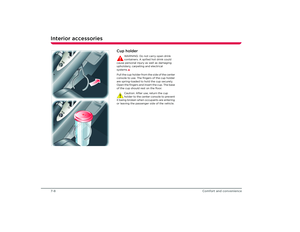 60
60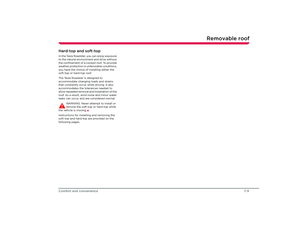 61
61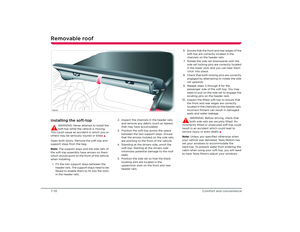 62
62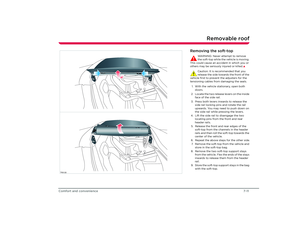 63
63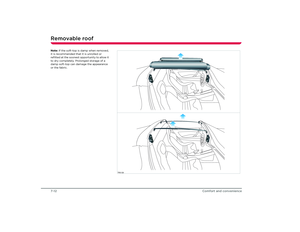 64
64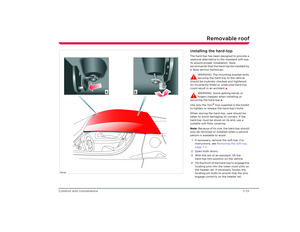 65
65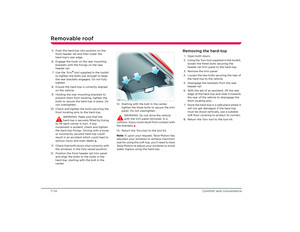 66
66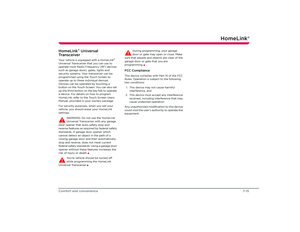 67
67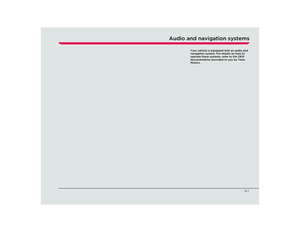 68
68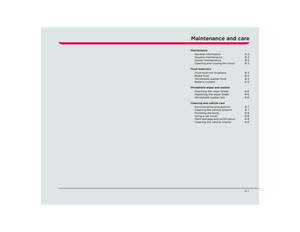 69
69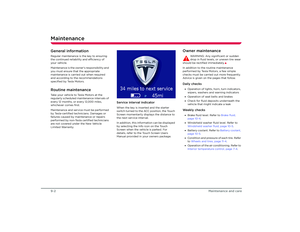 70
70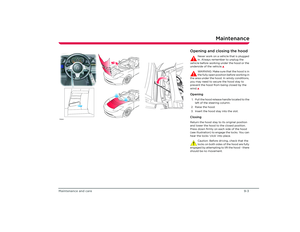 71
71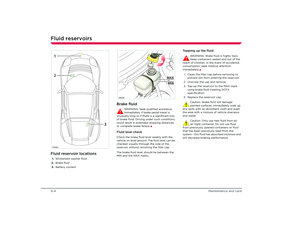 72
72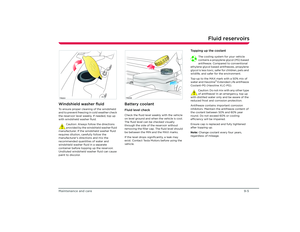 73
73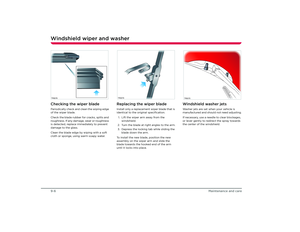 74
74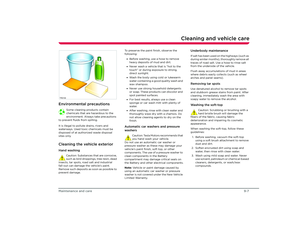 75
75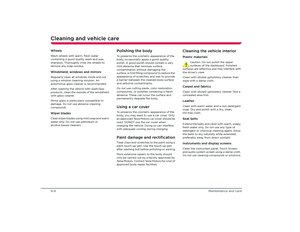 76
76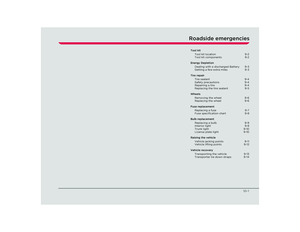 77
77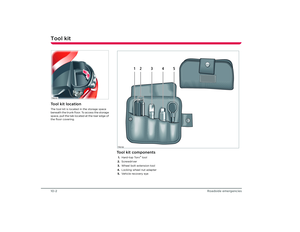 78
78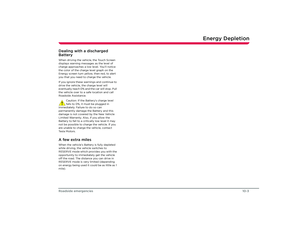 79
79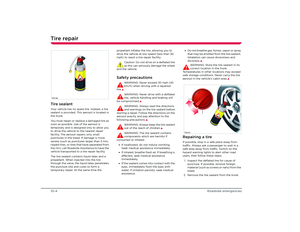 80
80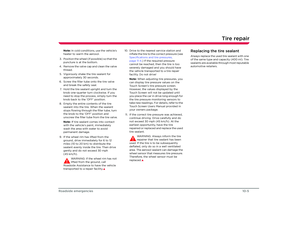 81
81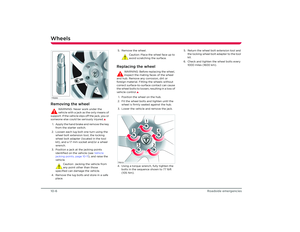 82
82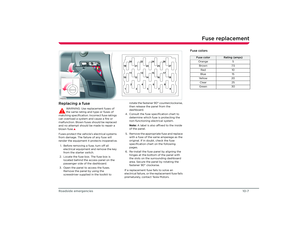 83
83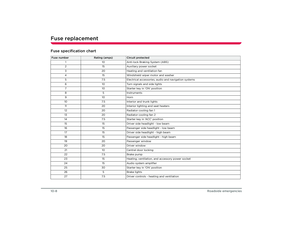 84
84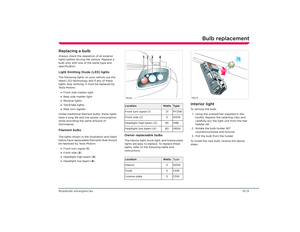 85
85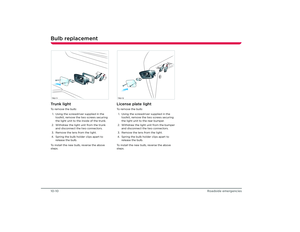 86
86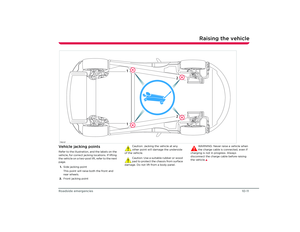 87
87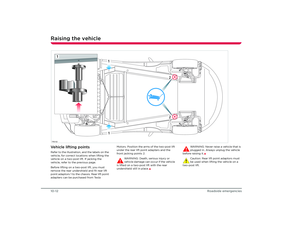 88
88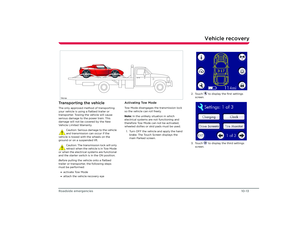 89
89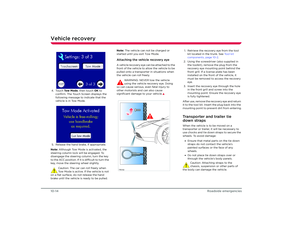 90
90 91
91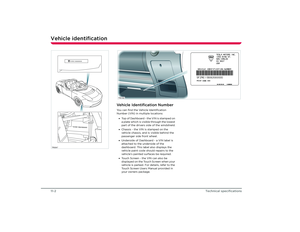 92
92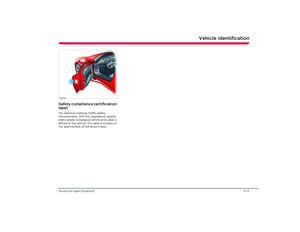 93
93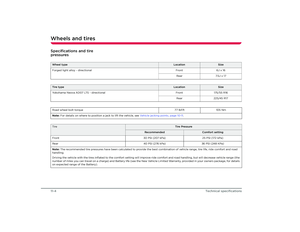 94
94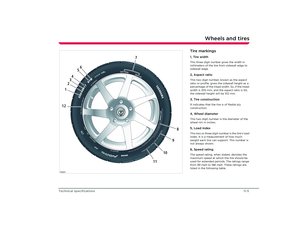 95
95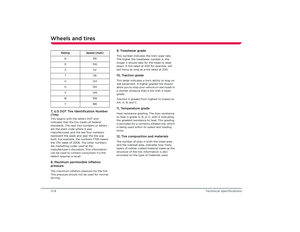 96
96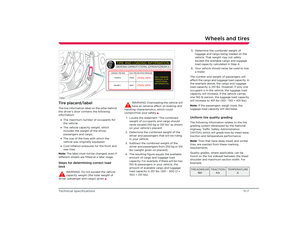 97
97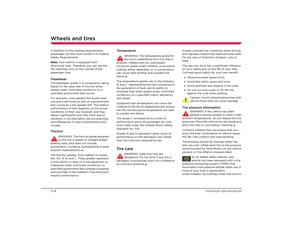 98
98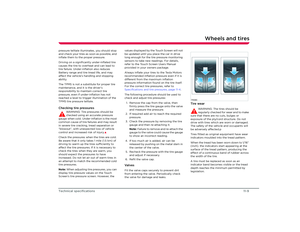 99
99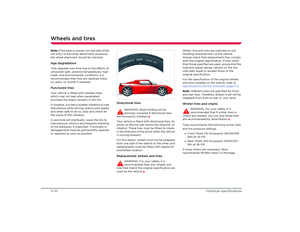 100
100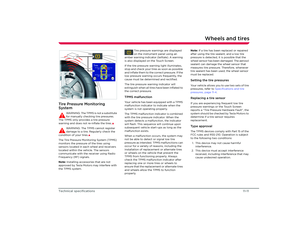 101
101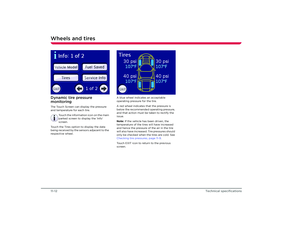 102
102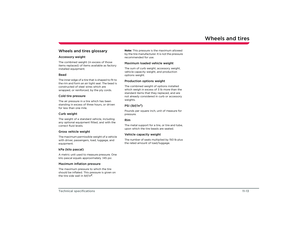 103
103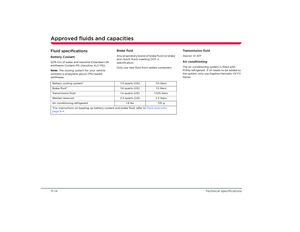 104
104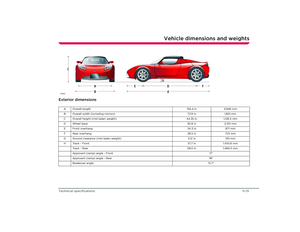 105
105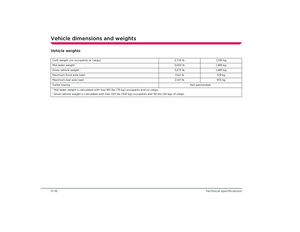 106
106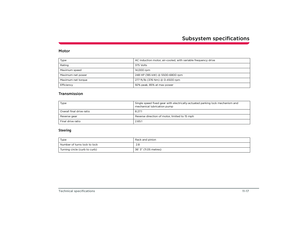 107
107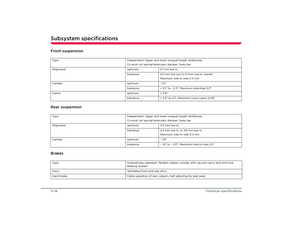 108
108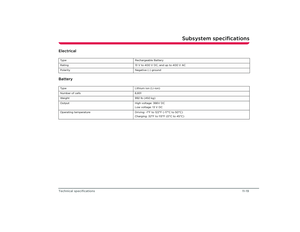 109
109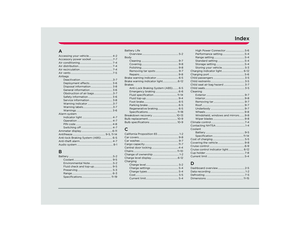 110
110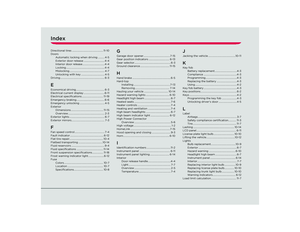 111
111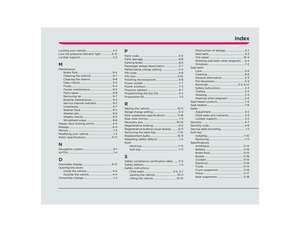 112
112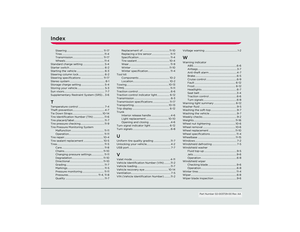 113
113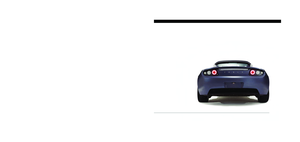 114
114
